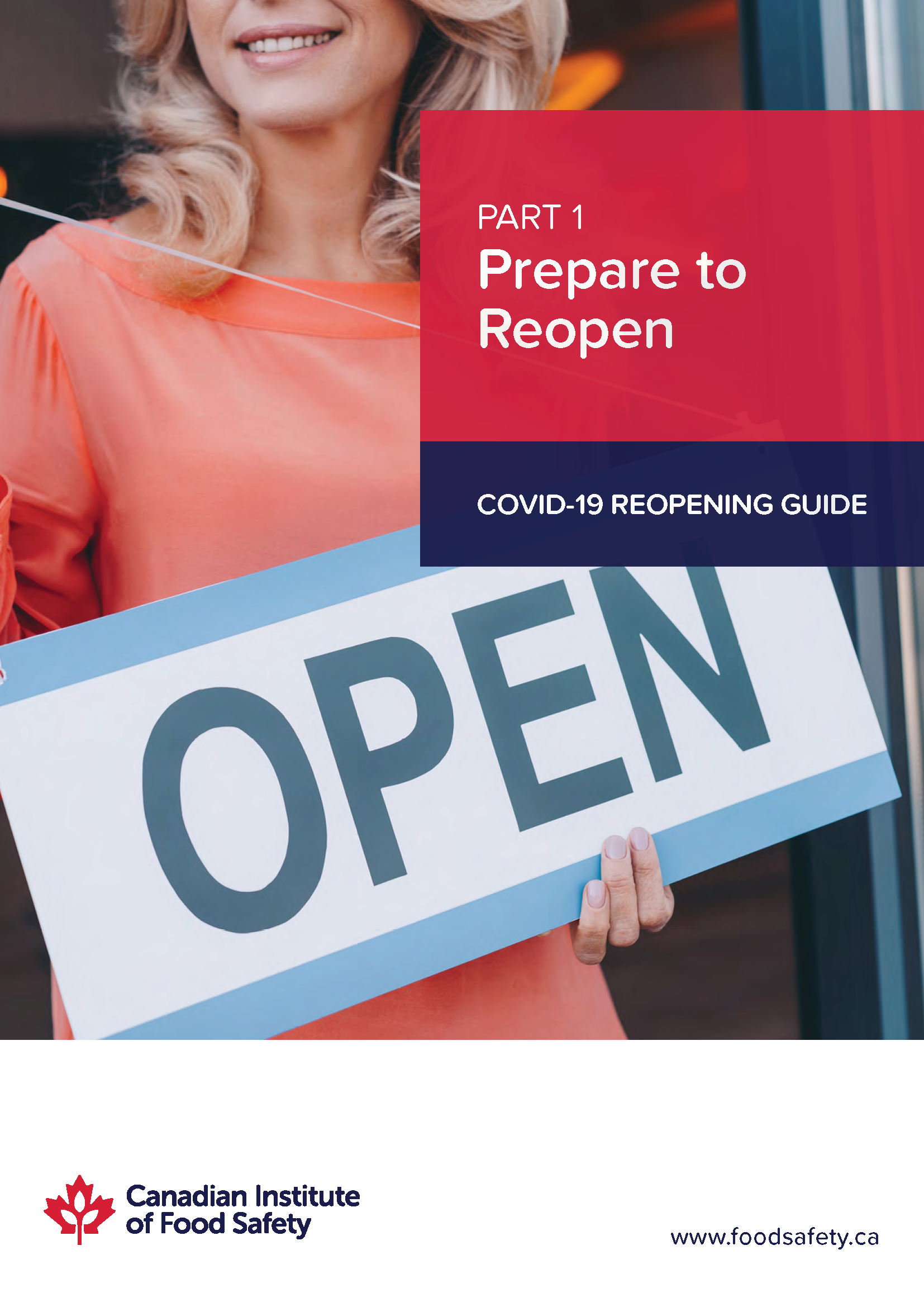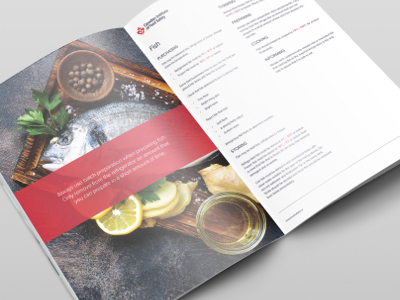
Welcome to the first guide in our three-part series on reopening your food business safely following COVID-19 shutdowns.
In this guide, we’ll work through the steps you need to take to prepare your food business for reopening, including familiarizing yourself with legislation, reconsidering your business model and retaining your shutdown model.
In later guides we’ll take a closer look at how to train your team and communicate with customers, as well as practical actions you need to take to operate in the ‘new normal’.
In This Resource
Follow the Legislation
Every province and territory in Canada has different timelines, phases and rules for reopening after the COVID-19 pandemic. It’s important to stay well-informed about these for the local area in which your food business operates. Bear in mind that your local municipality may have extra restrictions outside of provincial requirements.
Key questions you need to answer are:
WHAT ARE THE RULES AROUND REOPENING?
- Be sure to find out all you need to know about the rules for reopening as every location has different requirements. Some rules being introduced by provincial governments include:
- All parties must be kept at least 2 metres / 6 feet apart
- Employees must complete a health check prior to each shift
- Employees must wear a face covering to work
- Customers must wash their hands before entering the premises
- Hand sanitizer must be supplied to all customers
- Only outdoor dining is permitted
- Only one customer is permitted in the washroom at any time
- Self-service stations (e.g. for straws and napkins) are not permitted
Check to see if your local health authority has a social media presence or website in order to stay abreast of the rules that apply to you, and be sure to check back frequently as rules are being introduced and changed all the time.
WHAT CATEGORY IS MY BUSINESS IN?
In most provinces, food retail, food processing and food service businesses are being subjected to different opening dates and different restrictions.
For most food businesses, determining the category is easy — for example, a dine-in restaurant is considered food service. For some businesses, it’s not so simple. Consider a farm shop that sells food products made on the farm but has a few tables and chairs for customers to enjoy their purchases. This could be classified as food retail, food processing or food service.
If there’s any ambiguity about the category your food business falls into, contact the local authorities for guidance before reopening as doing the wrong thing could subject you to a hefty fine.
WHAT IS THE PERMITTED CAPACITY?
Most food service businesses have a fixed maximum capacity as part of their licence to operate. For many that are allowed to reopen, authorities are limiting this maximum capacity — often at 50% of the previous maximum. Capacity restrictions may differ between indoor and outdoor dining.
Permitted capacity doesn’t just apply to food service businesses. Food retail businesses are also subject to restrictions on how many people are allowed into the store at any one time.
WHAT IS THE MAXIMUM PARTY SIZE?
Further restrictions are being imposed on the maximum number of people per group. For food service businesses, there may be a limit of 4 to 6 people per table. For food retail businesses, some provinces and municipalities are allowing one family member to enter the store at any given time.
Once you’ve determined what the rules are for your food business, post signage for both employees and customers to make them aware and remind them of these requirements — they may fall back into old habits without this reinforcement.
Remember: Reopening in most provinces is following a phased approach and the answers to these key considerations will change over time. Always stay in touch with your local health authorities and monitor their website for new information.
Review Your Business Model and Operations
When reopening you may need to review your business operations and change them in order to meet legislative requirements and/or reassure customers about the safety of your operations.
WELCOMING CUSTOMERS
Despite reducing capacity and setting maximum party sizes, there may still be issues with customers congregating in areas of your business. A common area for customers to congregate is at the host station at the entrance to the business. To try and counteract this, consider moving to a reservations-only or call-ahead model and put signage at the entrance to the business explaining that walk-ins can’t be welcomed at this time. Staggered seating times and floor markings can also be used to help alleviate groups of people near the entrance.
SERVING CUSTOMERS
Prior to COVID-19, servers were encouraged to visit their customers’ tables multiple times to take orders, bring water, provide cutlery, serve food and drinks, perform checks and take payments. Consider whether the number of interactions in your business need to be reduced. This could be done through online ordering, payment and feedback channels. A simple non-technical method is to have a flag or sign that customers use to indicate they require service, thus reducing the number of unnecessary trips to the table.
If your business operates a buffet, salad bar or similar, this may need to be changed to a seated model for a short time (both for legislative and customer safety reasons). If you are still permitted to run a buffet, ensure that sneeze guards are used for all food items, serving utensils are changed and cleaned and sanitized regularly, and that a member of staff is on hand at all times to monitor customer behaviour and address safety concerns immediately. Other highly interactive dining experiences should also be reconsidered at this time.
CHANGING THE MENU
With many businesses operating at reduced capacity and with physical distancing required in the kitchen, it may not be feasible to offer the full menu that was in place prior to the COVID-19 pandemic. What’s more, you may not want to stock up on too much fresh produce in case loosened restrictions get rolled back due to another wave of the outbreak.
Determine whether a reduced menu could work for your business in this interim period before business returns back to normal. A sensible idea is to print fresh menus every day and give a new menu to each customer — this allows for menu changes to use up fresh produce, enables chefs to determine the most successful menu items, and prevents COVID-19 transmission through multiple customers holding the same menu.
REMOVING SELF-SERVICE STATIONS
Both food service and food retail businesses sometimes have self-service stations where customers can help themselves to items such as straws, napkins and sauces. These stations should be removed at this time as they pose issues around congregation and cross-contamination. Instead consider handing single-use items out to customers upon request.
UPDATING YOUR FOOD SAFETY PROGRAM
The Food Safety Program for your business will need to be adjusted prior to reopening. Food businesses simply cannot go back to the old way of working. Enhanced cleaning and sanitizing and personal hygiene protocols need to be followed, and food safety is paramount to ensure the health and well-being of both the employees and customers of a business.
Don’t Ditch Your Shutdown Model
As the doors to your food business open and customers are welcomed back, don’t be in too much of a hurry to ditch your shutdown model — for example, if you’ve been offering delivery and takeout options.
The shutdown has been long enough now that people have formed new habits such as eating takeout with their family. These habits will stick around for a while longer (if not permanently) as people are still cautious about eating outside of home. Furthermore, subsequent waves of the pandemic or spikes in numbers could see doors being closed again, so it’s a wise idea to keep that side of the business going until the pandemic is well and truly over.
Use this period before reopening as an opportunity to prepare for any further shutdowns. With the first shutdown, businesses were unprepared and as a result had cashflow issues, HR problems and massive amounts of food waste. Put a plan together with checklists and templates for how to handle any further shutdowns should they occur. Also, keep fresh produce to a minimum level as a shutdown could happen at any time.




